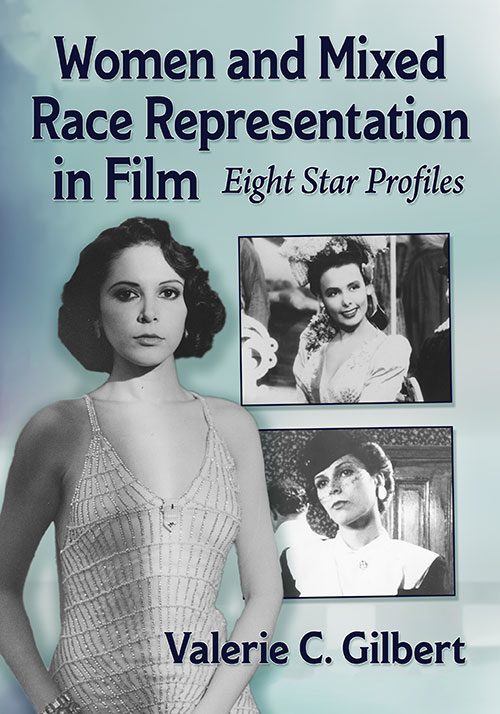Women and Mixed Race Representation in Film: Eight Star ProfilesPosted in Biography, Books, Communications/Media Studies, History, Media Archive, Passing, United States, Women on 2021-10-27 20:24Z by Steven |
Women and Mixed Race Representation in Film: Eight Star Profiles
McFarland
2021-09-10
302 pages
54 photos, notes, bibliography, index
7 x 10
Softcover ISBN: 978-1-4766-6338-8
eBook ISBN: 978-1-4766-4473-8
Valerie C. Gilbert
Seattle, Washington
This book uses a black/white interracial lens to examine the lives and careers of eight prominent American-born actresses from the silent age through the studio era, New Hollywood, and into the present century: Josephine Baker, Nina Mae McKinney, Fredi Washington, Lena Horne, Dorothy Dandridge, Lonette McKee, Jennifer Beals and Halle Berry. Combining biography with detailed film readings, the author fleshes out the tragic mulatto stereotype, while at the same time exploring concepts and themes such as racial identity, the one-drop rule, passing, skin color, transracial adoption, interracial romance, and more. With a wealth of background information, this study also places these actresses in historical context, providing insight into the construction of race, both onscreen and off.
Table of Contents
- Preface
- Introduction
- 1. Josephine Baker: From Exotic Savage to Creole Queen
- 2. Nina Mae McKinney: Dichotomy of a Hollywood Black Woman
- 3. Fredi Washington: Paradox of Black Identity
- 4. Lena Horne: Separate and Unequalled
- 5. Dorothy Dandridge: Star-Crossed Crossover Star
- 6. Lonette McKee: Mixed Race Heroine Remix
- 7. Jennifer Beals: White But Not Quite
- 8. Halle Berry: Imitation of Dorothy Dandridge
- Chapter Notes
- Bibliography
- Screen Title Index
- Subject Index



